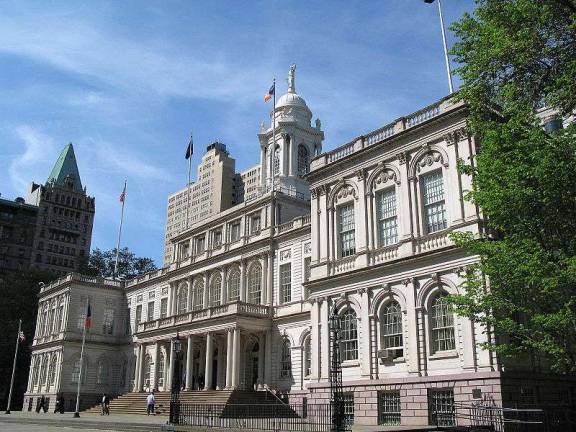District Commission Hears Public's Opinions on Manhattan Divisions

By Paul Bisceglio Reunite Greenwich Village, and unite Chinatown and the Lower East Side. These were downtown Manhattanites' two most common requests in the Districting Commission's public hearing at New York Law School last week. This first of five hearings, one per borough, gathered public opinion on the upcoming revision of the city's 51 City Council District boundaries. Manhattan hosts 10 Council Districts, whose lines are distinct from its 12 Community Districts and its many informal neighborhoods, and which determine its communities' political representation in City Hall. The New York City Charter requires that the Council District lines are redrawn every 10 years following each decennial census to reflect the city's shifting demographics. The hearing was, in Districting Commission Chair Benito Romano's words, "the first stage" of the districting process. Mayor Michael Bloomberg and City Council leaders appointed the 15-person independent Commission earlier in the summer, and the Commission is now spending two weeks meeting in the five boroughs to hear what local politicians, advocacy groups and everyday residents have to say about the current district boundaries. The first meeting reserved four hours for pre-scheduled speakers and walk-ins to speak their minds. "What looks logical on a map is not necessarily the way to define communities," argued one elderly Greenwich Village resident. She echoed the frustration of numerous Village locals who attended the hearing to tell the Commission that the current layout of Districts 1, 2 and 3 has fragmented the Village's community. "The cohesiveness is gone," another resident agreed. She pointed to the Village's recent failure in its fight against New York University's expansion plan as the result of being represented by too many Council members. "We want to restore and regain the historic center of that neighborhood," entreated a third G.V. local. Members of a number of Asian American advocacy groups stressed the importance of revising the Districts to ensure equal representation for the city's skyrocketing Asian population. They pushed for combining Chinatown and the Lower East Side into one district, which they believe would accommodate Asian American population shifts and encompass more common interests than Chinatown's current pairing with the Financial District. "There are communities of interest in Lower Manhattan that do not get proper representation," argued an Asian American BAR Association lawyer. Other Manhattan residents advocated border adjustments in Harlem and the Upper East Side, emphasized that Asians and Latinos cannot simply be lumped together as minority voting communities, suggested better ways for the Commission to encourage residents' online participation in the revision process and pleaded with the Commission to avoid gerrymandering. "Good districting ensures that people's voices will be heard regardless of political position," declared one District leader. Another Manhattan resident drew some laughs from the crowd when he told the Commission that he had it all figured out. "Look, this is easy," he said. "Just go by the bus corridors." After a preliminary draft and a second round of public hearings, the Commission will release a tentative District layout to City Council in November, and will submit its final draft in March 2013.